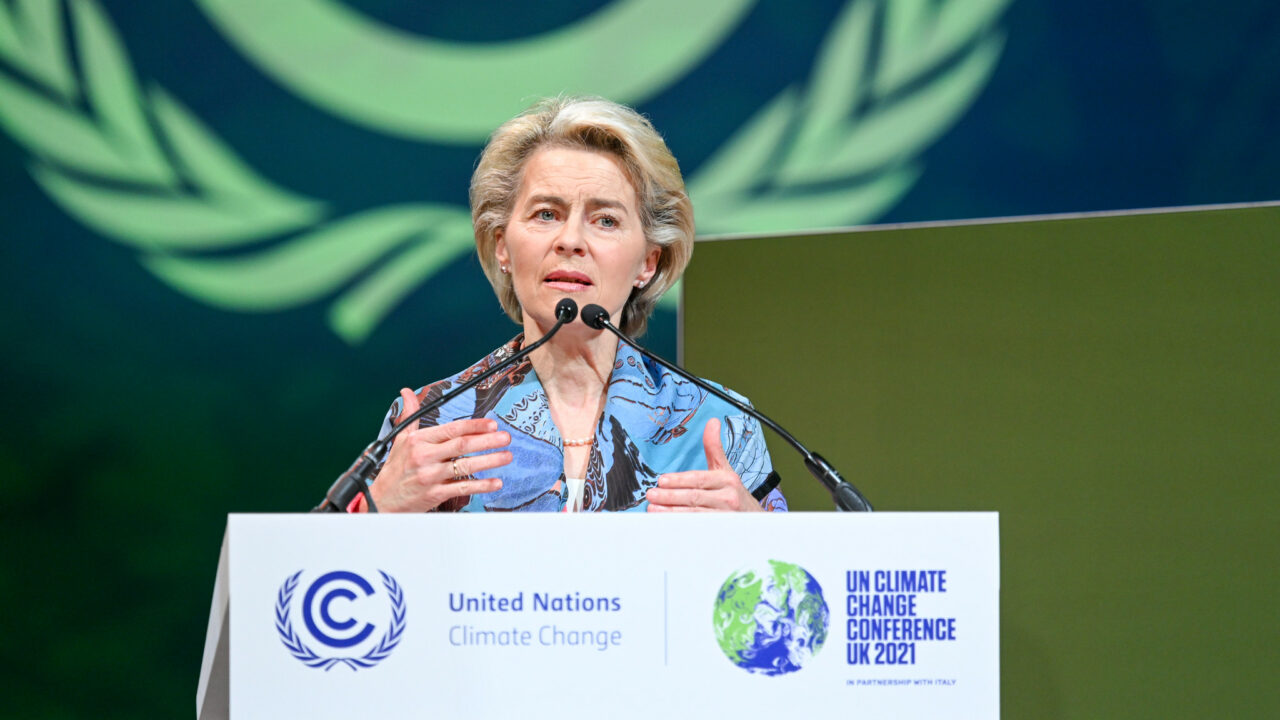Three key areas of Europe’s climate diplomacy
The EU’s efforts to address climate change should place more emphasis on bilateral alliances and partnerships. But these efforts will only be credible if they are firmly rooted in domestic policies
COP26 was a coming of age for Europe’s climate diplomacy. But to mature into a global leader on climate issues, the European Union and its member states must collectively address three challenges: how to diversify global energy supply and industrial value chains; build credible partnerships and strong alliances; and provide state finance, development aid, and private investment structures. Therefore, these areas are worth watching for further developments.
Secure, green value chains
Europe’s climate ambition for 2030 is a 55 per cent reduction in greenhouse gas emissions. In the long term, the EU aims to achieve climate neutrality by 2050. This green transition will be materially intensive, which is challenging for a resource-poor continent such as Europe. To achieve climate neutrality, the EU will require 18 times more lithium and five times more cobalt than it currently uses by 2030, and almost 60 times more lithium and 15 times more cobalt by 2050. However, these essential materials are mainly concentrated outside Europe, in countries such as the Democratic Republic of the Congo, Chile, and China.
Ambitious domestic policies designed to improve resource efficiency and promote recycling and urban mining are important parts of the solution. But, in a rapidly changing geo-economic environment, the European Green Deal also involves foreign policy, along with trade and industrial policy.
Developments in these areas will need to occur as part of Europe’s green transition. It is likely that the EU will aim to shorten and diversify its value chains, while gradually persuading foreign suppliers to adopt its standards. The union will probably green trade in energy products – gradually moving from fossil fuels to clean electricity and green hydrogen – and develop new supplies of essential materials, while making these supplies stable and secure through alliances and partnerships.
The climate-security nexus
The European Green Deal will also affect the EU’s security policy. For example, in countries whose wealth and internal power structures are built on fossil fuels, the green transition may lead to domestic unrest and a loss of international influence. Some of these states will try to use the transition to consolidate their geopolitical positions by, for instance, investing in and exporting blue hydrogen. To adequately assess such changes, the EU needs to strengthen its early warning and horizon scanning capacities.
Another security dimension of the green transition relates to the increased electrification of energy supplies. While smart grids will create opportunities for new forms of regional cooperation, they may also become more vulnerable to cyber-attacks and other forms of hostile interference. Therefore, the climate-security nexus is inseparable from wider efforts to protect Europeans’ digital security.
In countries whose wealth and internal power structures are built on fossil fuels, the green transition may lead to domestic unrest and a loss of international influence
Climate finance
For Europe’s climate diplomacy to be fit for purpose in the 2020s, it needs a strong climate finance pillar. The EU adopted its first package of climate funding in 2009 – making it a pioneer in the area – and it has remained a global leader ever since. In 2019 the EU, its member states, and the European Investment Bank (EIB) provided more than €23 billion in public climate finance to developing countries. At the same time, the EU is increasingly integrating climate action into other areas of financial policy, such as official development assistance, under the leadership of the Directorate-General for International Partnerships.
Europe also needs to intensify its efforts to mobilise private money and find ways to ensure that the resulting financial flows are consistent with the transition to a low-carbon future. This idea is firmly embedded in the EU’s Taxonomy Regulation – a classification system for environmentally sustainable economic activities that will help the union scale up sustainable investment and implement the European Green Deal – and in the recently announced Global Gateway, an initiative designed to boost green infrastructure projects worldwide in line with the Paris Agreement and the Glasgow Climate Pact.
Public or private finance alone, then, will not suffice. There should also be enough high-quality projects to absorb these financial flows, highlighting the importance of technical assistance. Since institutions such as the EIB have considerable experience in this area, they can provide indispensable climate diplomacy tools.
Conclusion
Climate diplomacy is becoming a permanent process rather than one limited to major conferences. In turn, EU member states and institutions are increasingly focusing their climate efforts on forums such as the G7 and the G20, the Major Economies Forum on Energy and Climate, the Ministerial on Climate Action, the Petersberg Climate Dialogue, and the World Economic Forum, to name just a few.
In addition, Europe should place more emphasis on developing strong bilateral alliances and partnerships. The EU has already formed a Green Alliance with Japan. And it launched a promising Just Energy Transition Partnership with South Africa at COP26.
But the EU’s climate diplomacy will only be credible if it is firmly rooted in domestic policies, notably the Fit for 55 package. To become a reliable partner of third countries, the union will need to help develop viable policies on a just transition in its member states. Europeans can convince others to take more ambitious climate action because they have created a solid legal framework for their own efforts in the area. And the EU can engage in partnerships with countries that need its support because it has domestic climate policies with built-in solidarity mechanisms. After all, as the old saying goes: a strong foreign policy begins at home.
Mauro Petriccione is director-general of the European Commission’s Directorate-General for Climate Action. Peter Van Kemseke is a diplomat and a senior policy assistant at the Directorate-General for Climate Action. The opinions expressed in this commentary are solely the authors’ and not those of EU institutions.
The European Council on Foreign Relations does not take collective positions. ECFR publications only represent the views of their individual authors.



